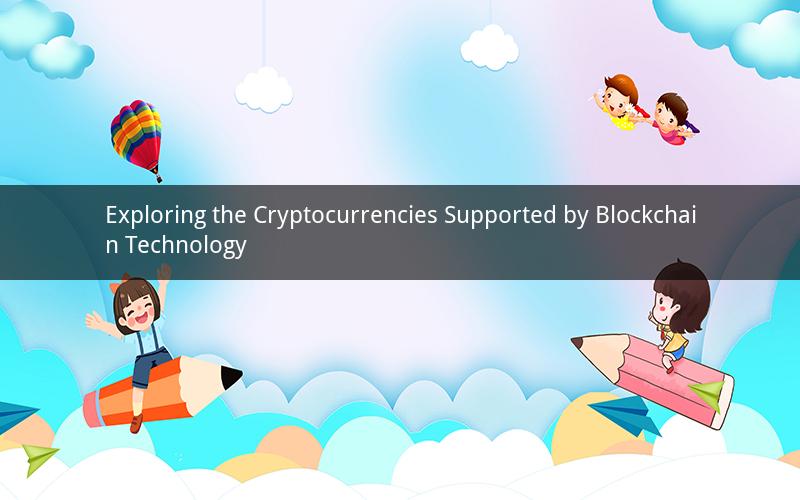
Blockchain technology has revolutionized the financial industry, and its integration with cryptocurrencies has paved the way for a new era of digital transactions. This article delves into the various cryptocurrencies supported by blockchain technology and explores their unique features and applications.
1. Bitcoin (BTC)
Bitcoin, the first and most well-known cryptocurrency, is supported by the blockchain technology that laid the foundation for the entire crypto industry. Created by an anonymous person or group known as Satoshi Nakamoto, Bitcoin operates on a decentralized network, making it immune to government control and manipulation. Bitcoin has a limited supply of 21 million coins, which ensures its scarcity and value.
2. Ethereum (ETH)
Ethereum is a blockchain platform that supports a wide range of cryptocurrencies, including its native token, Ether (ETH). Unlike Bitcoin, Ethereum allows developers to build decentralized applications (DApps) and smart contracts on its blockchain. This flexibility has made Ethereum a popular choice for various crypto projects, including decentralized finance (DeFi), non-fungible tokens (NFTs), and gaming.
3. Litecoin (LTC)
Litecoin is a cryptocurrency that operates on a blockchain and was created as a fork of Bitcoin. It differs from Bitcoin in terms of its hashing algorithm, block generation time, and total coin supply. Litecoin is known for its faster transaction confirmation times and lower fees, making it a popular choice for peer-to-peer transactions.
4. Ripple (XRP)
Ripple is a blockchain-based payment protocol designed to facilitate the global movement of money. It supports its native token, XRP, which is used to enable fast and low-cost cross-border transactions. Ripple's unique consensus algorithm allows it to process transactions at a much higher speed than traditional blockchain networks, making it an attractive solution for financial institutions and payment providers.
5. Cardano (ADA)
Cardano is a blockchain platform that aims to offer a more secure, transparent, and sustainable alternative to existing cryptocurrencies. It supports its native token, ADA, which is used for governance and transaction fees on the network. Cardano is known for its research-driven approach, which includes a peer-reviewed research process for its protocol updates.
6. Binance Coin (BNB)
Binance Coin is the native token of the Binance exchange, a leading cryptocurrency trading platform. BNB supports the Binance Smart Chain (BSC), a blockchain platform that offers high-performance and low-cost transactions. BNB is used for various purposes, including paying for transaction fees, participating in governance, and earning rewards through staking.
7. Polkadot (DOT)
Polkadot is a blockchain platform that aims to connect different blockchains and enable interoperability between them. It supports its native token, DOT, which is used for governance and staking. Polkadot's unique architecture allows for the seamless transfer of value and data between different blockchains, making it a potential game-changer for the crypto industry.
8. Chainlink (LINK)
Chainlink is a decentralized oracle network that connects smart contracts on blockchain platforms to real-world data. It supports its native token, LINK, which is used to pay for data feeds, secure the network, and reward participants. Chainlink has become a crucial component in the development of decentralized applications, providing reliable and secure access to real-world data.
9. Stellar (XLM)
Stellar is a blockchain platform designed to facilitate cross-border transactions and financial inclusion. It supports its native token, XLM, which is used for sending and receiving money across the Stellar network. Stellar's unique consensus algorithm allows for fast and low-cost transactions, making it an attractive solution for financial institutions and individuals alike.
10. Tezos (XTZ)
Tezos is a blockchain platform that focuses on self-amending capabilities, allowing for protocol upgrades without the need for hard forks. It supports its native token, XTZ, which is used for governance, staking, and transaction fees. Tezos has gained attention for its innovative approach to blockchain scalability and sustainability.
Frequently Asked Questions:
1. What is the difference between a cryptocurrency and blockchain?
A cryptocurrency is a digital or virtual currency that uses cryptography for security. Blockchain is a decentralized technology that enables the creation of digital currencies and can be used to record transactions across many computers so that the record cannot be altered retroactively without the alteration of all subsequent blocks and the consensus of the network.
2. How does blockchain support cryptocurrencies?
Blockchain supports cryptocurrencies by providing a secure, transparent, and decentralized platform for their creation and transactions. It ensures the integrity of the data, prevents fraud, and eliminates the need for intermediaries, making it an ideal technology for digital currencies.
3. Can a single blockchain support multiple cryptocurrencies?
Yes, a single blockchain can support multiple cryptocurrencies. This is achieved through the creation of different tokens or coins within the same blockchain network, each with its unique purpose and features.
4. Are all cryptocurrencies supported by blockchain?
Yes, all cryptocurrencies are supported by blockchain technology. The blockchain network provides the underlying infrastructure for the creation, transfer, and storage of digital currencies.
5. How does blockchain ensure the security of cryptocurrencies?
Blockchain ensures the security of cryptocurrencies by using cryptographic algorithms to secure transactions and maintain the integrity of the network. Each transaction is recorded in a block, which is then added to a chain of blocks, making it nearly impossible to alter the data without the consensus of the network.